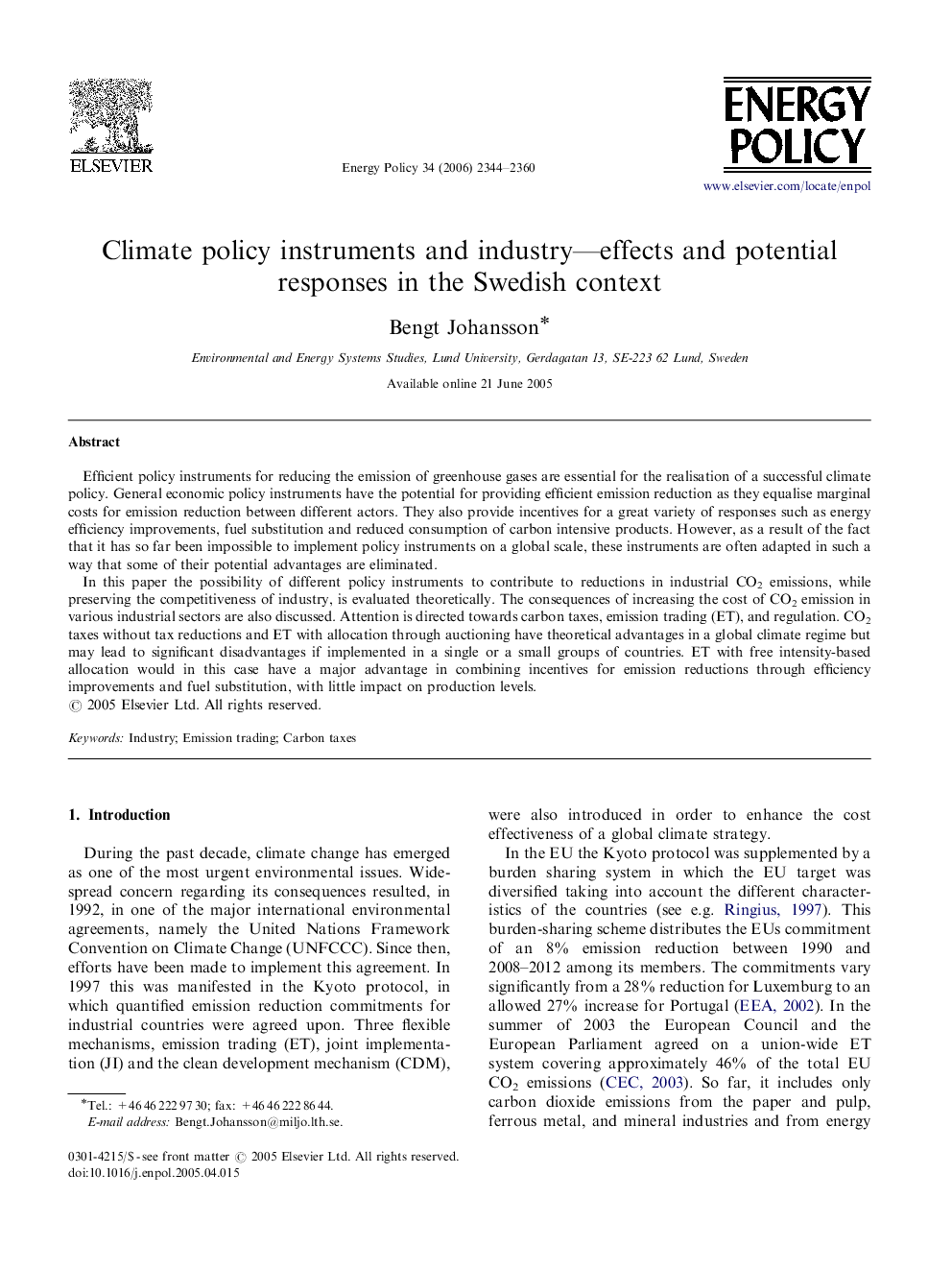| کد مقاله | کد نشریه | سال انتشار | مقاله انگلیسی | نسخه تمام متن |
|---|---|---|---|---|
| 994401 | 936084 | 2006 | 17 صفحه PDF | دانلود رایگان |

Efficient policy instruments for reducing the emission of greenhouse gases are essential for the realisation of a successful climate policy. General economic policy instruments have the potential for providing efficient emission reduction as they equalise marginal costs for emission reduction between different actors. They also provide incentives for a great variety of responses such as energy efficiency improvements, fuel substitution and reduced consumption of carbon intensive products. However, as a result of the fact that it has so far been impossible to implement policy instruments on a global scale, these instruments are often adapted in such a way that some of their potential advantages are eliminated.In this paper the possibility of different policy instruments to contribute to reductions in industrial CO2 emissions, while preserving the competitiveness of industry, is evaluated theoretically. The consequences of increasing the cost of CO2 emission in various industrial sectors are also discussed. Attention is directed towards carbon taxes, emission trading (ET), and regulation. CO2 taxes without tax reductions and ET with allocation through auctioning have theoretical advantages in a global climate regime but may lead to significant disadvantages if implemented in a single or a small groups of countries. ET with free intensity-based allocation would in this case have a major advantage in combining incentives for emission reductions through efficiency improvements and fuel substitution, with little impact on production levels.
Journal: Energy Policy - Volume 34, Issue 15, October 2006, Pages 2344–2360